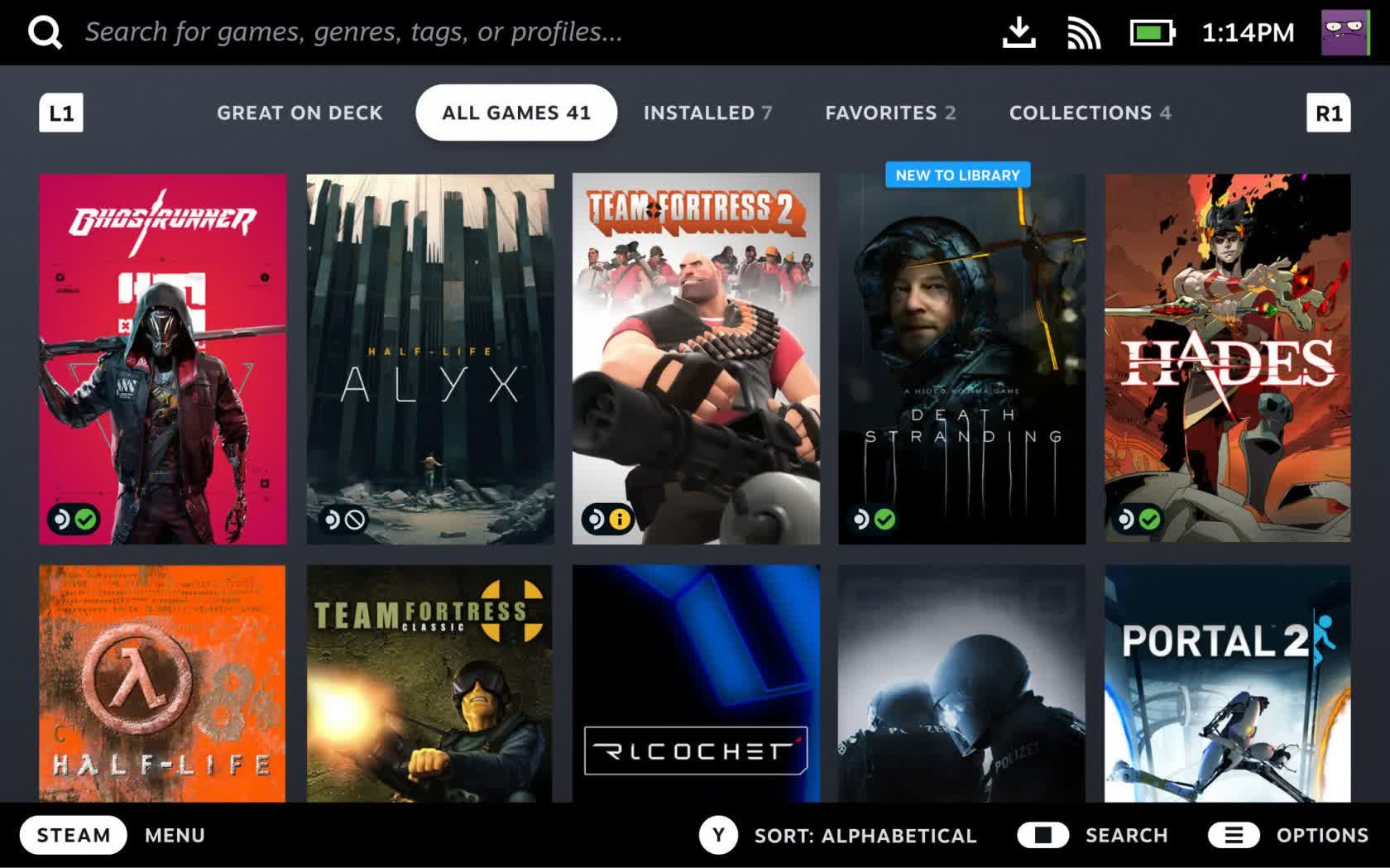What just happened? Valve has unveiled its plans for how it will verify Steam games' compatibility on its upcoming Steam Deck portable PC. The process will involve checking the functionality of each game and labeling them into four categories to inform players of how well each game works on the Steam Deck.

Steam is host to thousands of games, and all of them were primarily optimized to run on desktops or laptops, not a portable form factor. Furthermore, most games on Steam are Windows-only, and will need Valve's Proton compatibility layer in order to run on its Linux-based operating system. Valve's verification system is looking to ease the process of knowing how well each game runs for both users and developers.
Valve's page for the verification program lays out the four categories of compatibility. The highest is "verified," which basically means a game is fully playable from boot-up with a controller, can display at 1,280 x 800 or 1,280 x 720 with legible text, and Proton supports all its middleware including anti-cheat. The next rating down is "playable," meaning a game might require players to manually adjust some settings or get past a launcher using the touchscreen or virtual keyboard. Below that are games that are "unsupported" (Valve used the VR-only Half-Life Alex as an example) or "unknown," the latter of which simply haven't been tested yet.
When browsing Steam, users will be able to see badges next to games displaying their Steam Deck compatibility rating. There will also be an entire section of Steam displaying only games with the "verified" rating.
In an exclusive interview with Rock Paper Shotgun, Valve clarified that the minimum framerate for a "verified" rating is 30 frames per second, and that players can still try to boot up any game on Steam Deck even if it's rating is "unsupported" or "unknown." Valve also said that anti-cheat is one of its biggest obstacles for Steam Deck compatibility. The company confirmed that it will provide developers with an API that will let them make a game able to tell if it's running on a Steam Deck, and adjust default settings accordingly.
Valve has already started reviewing games for compatibility, and players will be able to check how much of their own libraries run well on Steam Deck before launch this December. Steam Deck verification will be an ongoing process, so a game's rating might change if it updates or as the Steam Deck's own software changes over time.
https://www.techspot.com/news/91810-valve-unveils-verification-process-games-steam-deck.html

